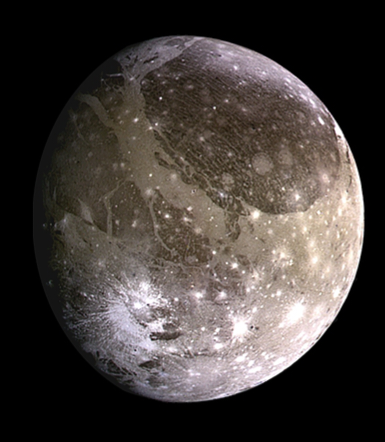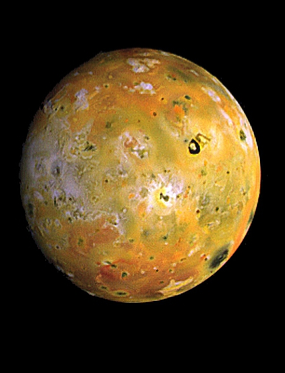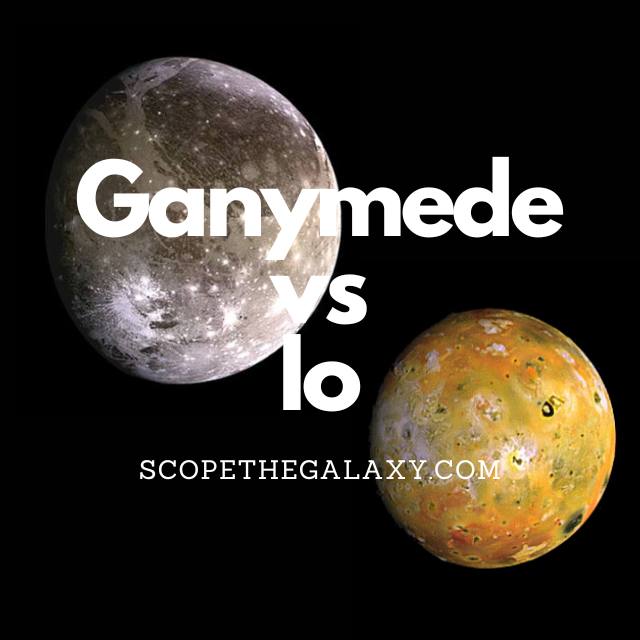*This post may contain affiliate links. This means we may make a commission if you purchase an item using one of our links*
Ganymede and Io are two of Jupiter’s Galilean moons discovered by Italian astronomer Galileo Galilei during the 17th century. These sister moons possess similar qualities, such as their distance from the Sun and their tidal lock to Jupiter. Still, they also have several unique properties that make them fascinating for scientists.
Discover the qualities that differentiate Ganymede and Io, which of them could host extraterrestrial life, and which is the most geologically active body in the solar system. Plus, learn the similarities and differences between these two moons.
What Is The Moon Ganymede?
Table of Contents

Ganymede is the largest moon in our solar system, bigger than Pluto and Mercury. As one of Jupiter’s Galilean moons, first discovered in January 1610, this lunar entity is among the most fascinating objects in the Milky Way.
The surface of Jupiter is half rock and half water ice, and satellite images show a unique terrain. Lengthy grooves make the moon unique, while differing densities of light and dark terrain suggest that the moon passed through many periods of crust formation.
Ganymede orbits Jupiter from a distance of around 1,070,000km, with an orbit that takes seven days to complete. Sitting 778,000,000km from the Sun, the temperatures on this frozen planet vary from -112 to -193 degrees Celsius. The diameter of Ganymede is 5,268km, but with only half the mass of Mercury, it is still classified as a low-density object.
In 2015, NASA’s Hubble Space Telescope made one of its most significant discoveries, providing evidence for a massive subterranean ocean that could contain more water than the total found on Earth’s surface. The discovery of water on a planetary body is significant because it’s the first sign of extraterrestrial life and indicates that a planet is habitable.
The Hubble telescope also showed the presence of ozone on Ganymede, suggesting that the moon could have oxygen in its atmosphere.
Scientists in the 1970s first proposed the idea of an underground ocean. Thanks to recent observations, they now estimate this body of water could be ten times deeper than the ocean’s we find on Earth, stretching almost 100km deep. And it may be bruised under as much as 150km of crust, primarily composed of ice.
Another fascinating feature of Ganymede is that it’s the only moon to possess a magnetic field. This field causes aurorae, ribbons of light composed of electrified gas, that circle the moon’s north and south poles. And because of the moon’s proximity to Jupiter, it is also affected by its planet’s magnetic field, which can change and manipulate the aurorae.
What Is The Moon Io?

The Moon Io – also known as Jupiter I – is the third largest of the Galilean moons, which has the closest orbit to Jupiter. It is the fourth-largest moon in our solar system by size – with a diameter of 3,643km – but has the highest density of all moons in the Milky Way.
In addition, Io has the strongest surface gravity of all moons and the least water by atomic ratio compared to any other astronomical object in our solar system.
Perhaps the most interesting feature of this lunar body is the 400 active volcanoes on its surface, which make it the most volcanically active object in the Milky Way; some of these volcanoes can exude plumes of sulfur to a height of several hundred miles.
The reason for this intense activity is the tidal heating caused by friction in the moon’s interior. Thanks to Io’s proximity to Jupiter, it finds itself caught between the gravity of its planet plus the two nearby moons – Ganymede and Europa. And this creates extreme tidal forces.
A side effect of these tidal forces is heat, which keeps most of Io’s crust in liquid form. Because of this, the surface of Io experiences a constant state of renewal; sites once home to large craters are slowly filled with molten lava and liquid rock.
While the complete makeup of Io’s surface is not yet defined, theories suggest that its main component could be sulfur and sulfur compounds because of the varied coloring. Silicate rock could also be a likely component as it would account for the high temperatures.
Io orbits Jupiter from a distance of around 422,000km, with an orbit that takes 42.5 hours to complete. Sitting 778,000,000km from the Sun, the surface temperature of this planet sits around -130 degrees Celsius. But due to the intense volcanic activity, the lava flows can reach temperatures of 1649 degrees Celsius, which is far hotter than anything on Earth.
Similarities Between Ganymede And Io.
As both are natural satellites, it only makes sense that Ganymede and Io have their fair share of similarities, which in this case includes the below.
- Ganymede and Io are both moons of Jupiter.
- Both moons are impressively sized; Ganymede is the largest moon in the Milky Way, and Io is the fourth largest.
- The Italian astronomer Galileo Galilei discovered Ganymede and Io in the 17th century.
- Both lie at a similar distance from their planet Jupiter and the Sun.
- Both moons are tidally locked, so the same side always faces Jupiter.
- Neither have rings surrounding them.
- Neither have other objects surrounding them.
- Both orbit Jupiter in an elliptical pattern.
Differences Between Ganymede And Io.
In regards to the differences, they include the below.
- Io is volcanically active; Ganymede – and the other two Galilean moons of Jupiter – are not.
- The surface of Ganymede is heavily cratered thanks to various impacts over time, but any craters on Io are filled in by the molten lava that oozes across its surface.
- Ganymede is twice as far away from Jupiter than Io.
- Scientists predict an underground ocean on Ganymede, but there is no liquid water on Io.
- There is ozone in Ganymede’s atmosphere, suggesting the presence of oxygen, whereas Io has a thin atmosphere composed primarily of sulfur dioxide.
- The orbital period of Ganymede is almost four times the length of Io’s.
- Ganymede has a magnetosphere, a feature unique to this moon.
- Ganymede is the bigger of the two with a diameter of 5,268km compared to Io’s 3,643km.
- Ganymede’s density is 1.94 g/cm³ whilst Io’s is 3.53 g/cm³.
- Io’s gravitational strength is 1.796 m/s² whilst Ganymede’s is 1.428 m/s².
- In regards to mass, Ganymede’s is 1.48 × 10^23 kg whilst Io’s is 8.93 × 10^22 kg.
- Ganymede’s temperature is -112 to -193 degrees Celsius whilst Io’s is around -130 degrees Celsius.
Summary
Ganymede and Io are two of the largest moons in the Milky Way, which both orbit Jupiter. Thanks to their distance from the Sun, surface temperatures on these moons are frigid; still, the tidal forces on Io mean that the lava flows can reach temperatures of 1,649 degrees Celsius.
And that’s not the only difference. Ganymede fascinates scientists thanks to the likelihood of a subterranean ocean; it is also the largest moon in the Milky Way and possesses its own magnetosphere. In contrast, Io is a volcanic world, where more than 200 of these geological features regularly shoot sulfur flumes hundreds of miles high.
References
Io: A guide to Jupiter’s volcanic moon | Space
In-Depth | Io – NASA Solar System Exploration
This is our best look yet at Io, the solar system’s most volcanic object (nationalgeographic.com)


